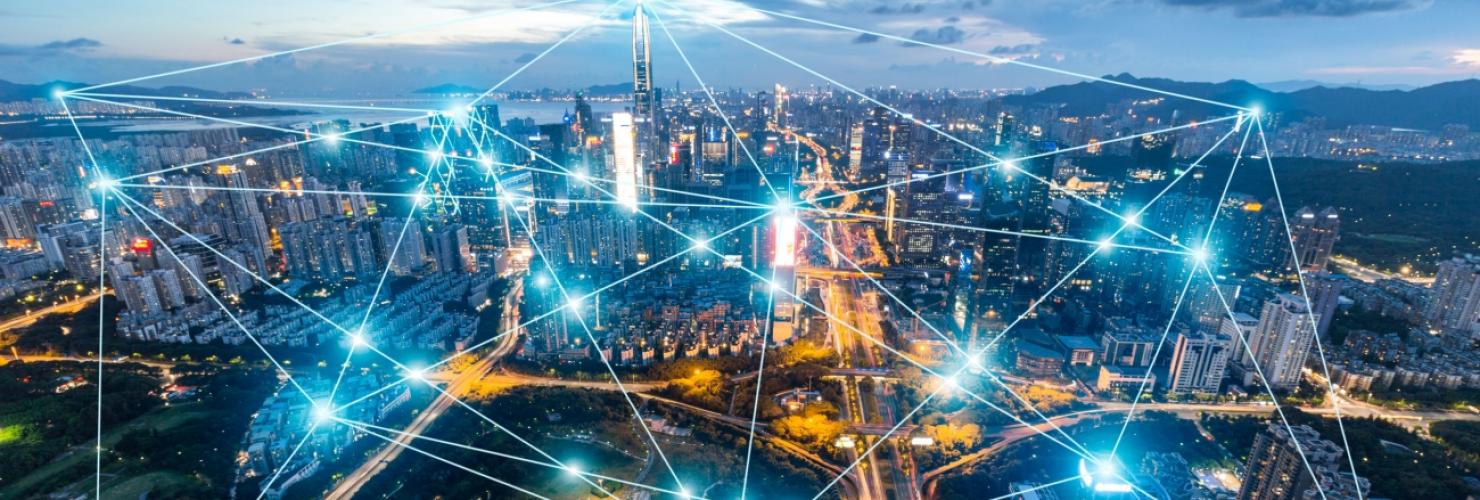

The Digital Silk Road is a development issue
The coronavirus pandemic threatens to wreck developing countries and lay bare the inequalities of the digital divide: diagnosis based on artificial intelligence (AI), smart working and e-learning are unthinkable in most countries. But there’s China: State media recently featured an AI-enabled COVID-19 diagnostic system, developed by two Chinese companies, being used by hospitals in Ecuador – just one of several Chinese digital health projects.
China is keen to present itself as a global power that can help developing countries bridge the digital divide. While many Western observers emphasize espionage and surveillance risks of China’s Digital Silk Road (DSR), the Chinese government stresses the unmet needs of digital connectivity in the Global South, from online education in Zambia to smart health in Saudi Arabia. As the world´s largest development donor, Europe needs to take notice.
It´s not just about 5G and surveillance cameras
Much of the European debate about the digital side of China’s Belt and Road Initiative (BRI) has narrowly focused on Huawei´s role in the continent´s 5G networks and Chinese surveillance-equipment sales. The implications of China’s digital push for development cooperation are rarely mentioned, even though developing countries have been the focus of Chinese information and communication (ICT) groups expanding abroad since the late 1990s.
Backed by Chinese government loans in the order of billions of euros, Huawei and its rival ZTE, for instance, built much of Africa´s digital infrastructure. In 2015 and 2017, after the DSR was announced, Chinese ICT infrastructure financing across the continent surpassed the combined funds from African governments, multilateral agencies, and G7 nations. Chinese-built fiber-optic cables also increased digital connectivity in landlocked Central Asia.
Beyond basic hardware, Chinese firms expanded to implementing e-governance, smart education and digital health projects. For example, the African Union in 2017 launched its Smart Health Monitoring Room using ZTE technology. And Chinese e-commerce and fintech platforms are another core part of the DSR, especially in digitally savvy Southeast Asia.
Promoting digital development with Chinese characteristics
Emphasizing development is typical of China´s foreign policy approach to developing countries. Building a global information network with China at its center at the same time quite naturally serves tech companies´ market expansion – and Beijing’s economic, security and diplomatic goals. While financing digital connectivity in underserved regions, Chinese government is also positioning China as a leading player in digital development – one able to advance the United Nations´ ambitious Sustainable Development Goals (SDGs).
China´s wish to influence global governance norms and to challenge Western discourses also entails promoting the DSR as a development concept in its own right. Several UN agencies now use the term, a testament to China´s influence. The UN Centre for Trade Facilitation and Electronic Business (UN/CEFACT) is exploring how standards for cross-border e-commerce can support DSR, and Beijing and the International Telecommunication Union (ITU) are looking to expand connectivity along the BRI. ITU Secretary General Zhao Houlin says the BRI “recognizes this critical role played by ICTs as a foundation for development.”
Even the UK’s Department for International Development commissioned a study on how the DSR could help meet the SDGs. It praised the DSR’s potential to spur rural growth, support SMEs, reduce inequality, and strengthen democratic participation. And it said Chinese digital products and services and ICT investments served local needs better than Western alternatives – two of the report’s authors are affiliated with a think tank under China’s State Council.
Europe must step up its digital development game
Digital transformation does spur development. China sees its burgeoning digital economy as a success story that can be shared with others – efforts to improve global broadband access are often framed as natural extension of China´s domestic experiences. The EU and its member states are also aiming to leverage their digital technologies for the benefit of international development. There are the EU’s Digital4Development strategy and many national initiatives, but Europe’s overall scale of funding lags behind China´s ambitions – and digital connectivity only gets a brief mention in the EU Connectivity Strategy.
There are crucial differences between the EU’s approach and China’s. For one, Beijing’s vision for global cyber governance could normalize an authoritarian approach to digital development and prevent citizen empowerment and innovation. At the same time, as it readies to launch a more ambitious Global Digital Cooperation Strategy in 2021, the EU could learn a thing or two from Chinese tech companies about nurturing local innovation and quickly delivering affordable ICT infrastructure – joint efforts with Japan are a good start. But ensuring enough funding and mobilizing what European tech firms have to offer in a post-COVID-19 world will be key.
